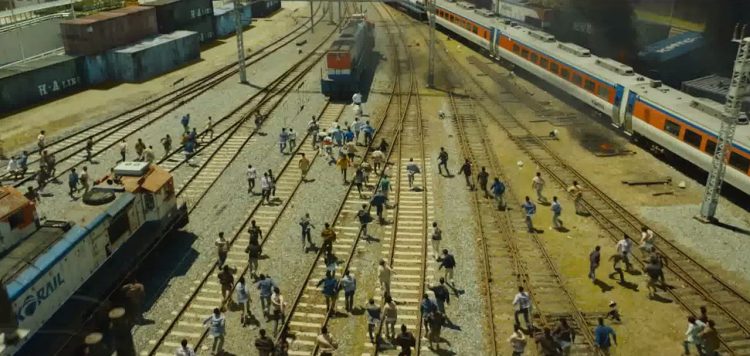Train to Busan is a heart-pounding, armrest-gripping, teeth clenching zombie flick that breathes new life into the genre.
Just when the zombie genre seemed on its way out, then along rolls in Train to Busan. This South Korean production breathes a new life into the genre without straying too far out of its confines. The rules set in place in this world are a little updated from the usual and refreshingly there are no guns. Not only does that raise the stakes,
Taking place in Seoul, South Korea, Train to Busan follows Seok-Woo (Gong Yoo), a fund manager, and father to Soo-an (Kim Su-an). In typical horror movie fashion, he’s a terrible father. So terrible that he gives his daughter a birthday present she already has while she begs to see her mother in Busan the next day to celebrate. Looking to appease his daughter, early the next morning he takes her on a KTX bullet train to Busan. Little do they know a chemical spill nearby has caused a wave of infected people. Little do they know, an infected person made it on the train. This swift and quick setup is not only refreshing but integral to setting the pace of the story. As the lower class cars fall to the zombie outbreak, the forward class cabins fight to keep the undead out and escape.
Train to Busan is such an interesting study on the application of a genre. All the facets of a zombie horror movie are there – the absentee dad, the plot-point child, a pregnant woman, a more than capable fighter. However, the way that the movie applies these characters and throws them into the story is quite interesting. The first 45 minutes of the movie can’t help but draw comparisons to 2013’s Snowpiercer. Both movies take place on a train, involve commentary on class warfare, and involve fighting to get to the front of the train. Except, Train to Busan replaces rebels with zombies. However, both have a similar forward momentum that feels fast, efficient, and damn right thrilling.
One of the most refreshing aspects of the movie is its update of the traditional rules of zombie movies. While they are sensitive to sound, they are also more affected by their vision. At one point, a character puts newspaper over a window and the zombies instantly stop their pursuit. It’s a fun rule that’s put to great use a few times. It’s also very refreshing to have zombie movie where there aren’t any guns. At one point, a group of characters makes an all out dash for another car, the all-out assault on the zombies in their way is not only impressive but incredibly entertaining. The creature design is also really marvelous and terrifying. It perfectly compliments the violence of the transformation into a zombie, which we get to witness a few times. What the movie does pull directly from
While yes, Train to Busan does eventually give into genre cliches – slow reaction times, horror movie
The amount of energy that director Yeon Sang-ho is able to infuse into Train to Busan is a welcome change from the stop and go nature of recent entries in the genre. Some wonky translations and frustrating decisions aside, the movie invigorates a genre on the way out. Sure, it completely owes a lot of itself to movies that came before it—World War Z, 28 Days Later—but it does enough on its own to warrant respect all on its own. Needless to say, I am all onboard with Train to Busan.
★★★★ out of five
Train to Busan is available to rent and buy on Amazon!
Hey, I'm Karl, founder and film critic at Smash Cut. I started Smash Cut in 2014 to share my love of movies and give a perspective I haven't yet seen represented. I'm also an editor at The New York Times, a Rotten Tomatoes-approved critic, and a member of the Online Film Critics Society.
